Conclusions
(2) 1996 - 2001
previous
| 9. |
Autumn cutting seems to be favouring the encroachment of Bracken. |
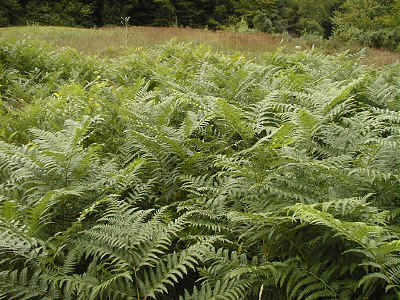 |
All three autumn cut sections
had developed quite extensive stands of Bracken in the lower halves of the sections. While Bracken was certainly present in spring cut sections, it was not nearly
so prominent. |
| 10. |
The grasses, Common Bent (Agrostis
capillaris) and Yorkshire Fog (Holcus lanatus), have
been the two most dominant species over the majority of the project site since the
beginning of the experiment. |
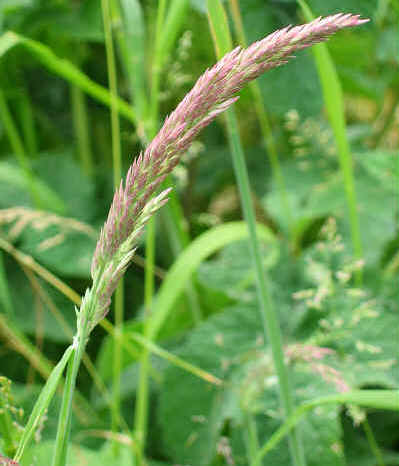 |
Yorkshire Fog
(left) is a very widespread and common grass in Britain occurring
in a variety of habitats including waste ground, meadows, rough grassland and open
woodland, as well as on a wide range of soils. This is an opportunistic species often
regarded as something of a weed. By 2001,
Yorkshire Fog was beginning to decline across much of the project site. |
| . |
 |
Common Bent (left, mixed with Yorkshire Fog) is also widespread and abundant in Britain on waste ground
and in pastures. It can tolerate a wide range of soils, but is very common on poor, dry,
acid soils. As a result, it is often an important component of heath and moorland
vegetation. The ability of Common Bent to
thrive on poor, acid soils may explain the fact that it is continuing to thrive on the
project site, while Yorkshire Fog is declining overall. |
| . |
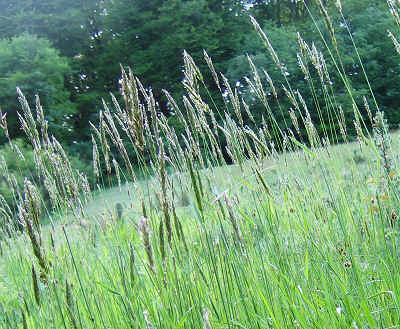 |
Other grasses
more characteristic of heaths have also colonized the project site. These include Sweet Vernal Grass (left), Bristle Bent and Purple Moor Grass. |
| 11. |
The use of Kerb granules to control the regeneration of grasses in the
initial stages of recolonization of the project site has had the most profound effect of
any of the management methods. |
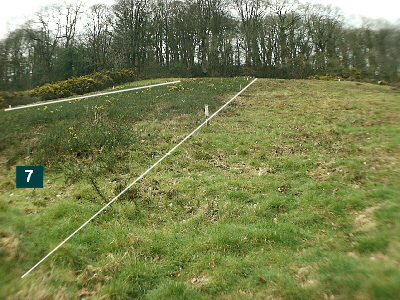 |
Section 7 was completely
unlike any of the other sections on the project site. This
section is cut annually in the spring, as are sections 2 and 4. However, the management of
section 7 has differed from the other spring cut sections in that Kerb granules were also
used once initially to control the regeneration of grasses. |
(N.B. The white lines on the images above and below have been
superimposed to aid the viewer's understanding. They are not there in reality and there
are no physical boundaries between the sections. White posts at intervals form the
boundary markers.) |
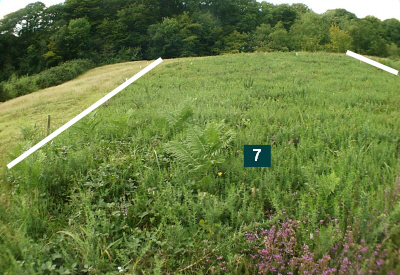 |
Section 7 is
not only extremely different to the other spring cut sections, but is also visibly
entirely different to the differently managed sections on either side of it which share
similar environmental conditions. The
observed differences exactly follow the white boundary markers all the way up the section
(left). This
clearly shows that the marked differences in vegetation in section 7 are a direct result
of the management regime applied to this section alone. |
| . |
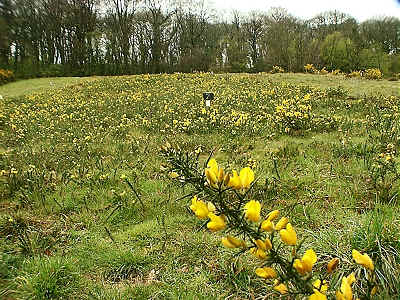 |
The initial
restriction of grass growth in this section seems to have been vitally important, allowing
other species (particularly sedges, gorse and heathers) the chance to become sufficiently
established to successfully compete with the grasses. |
|
| 12. |
The use of Garlon to control gorse in section 7 had no effect whatsoever. |
|
 |
Garlon was used once
initially on section 7 to control gorse. The picture (left) clearly shows how effective it was! The section
was only treated once with Garlon. The results would be very different with repeated
applications.
The fact that grasses were also controlled in this section initially
may have played a contributing role in allowing the gorse to get a head start and become
extremely dominant. |
|
| 13. |
Brushcutting three times a year has resulted in the
development of a diverse meadow habitat in section 6. |
|
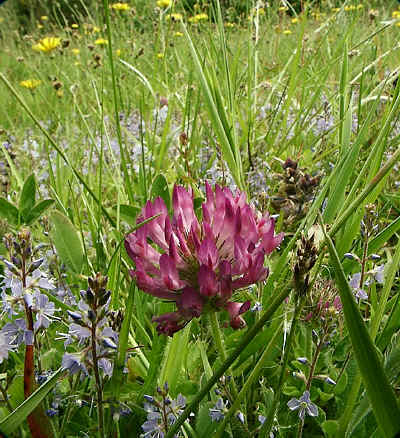 |
The
regular cutting in section 6 has prevented any one plant from becoming too tall, allowing
a diversity of flowers to flourish. The picture shows clover (pink), Heath Speedwell
(blue) and Cat's-ear (yellow) all flowering in amongst the grasses and woodrushes. Greater
Bird's-foot Trefoil, violets and Bugle were also very common in the grassy sward. Section 6 contained quantities of Heather (although very little Bell
Heather). The frequent cutting has caused the Heather clumps in this section to become
extremely dense and thick, severely restricting the establishment of any other plant
species in its midst.
In the long term, this management may result
in the most robust development of Heather. |
|
| 14. |
Brushcutting three times a year was the only management
regime which inhibited the spread of Brambles. |
|
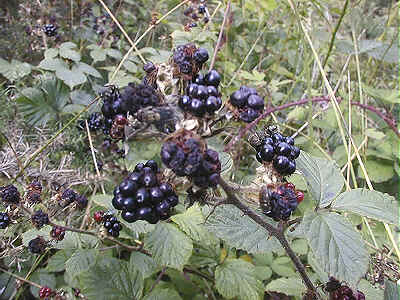 |
Bramble has been one of the
most dominant species on the project site since the start of the expermient. It had established in every single section and occurred with a percentage
frequency of 50% or higher in all sections apart from section 6.
In section 6 the percentage frequency of occurrence was only 10%. |
|